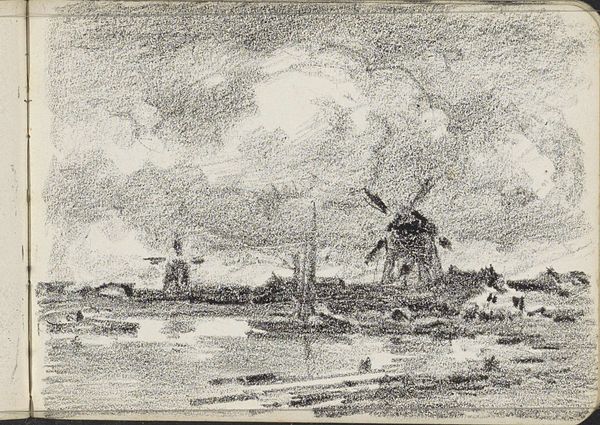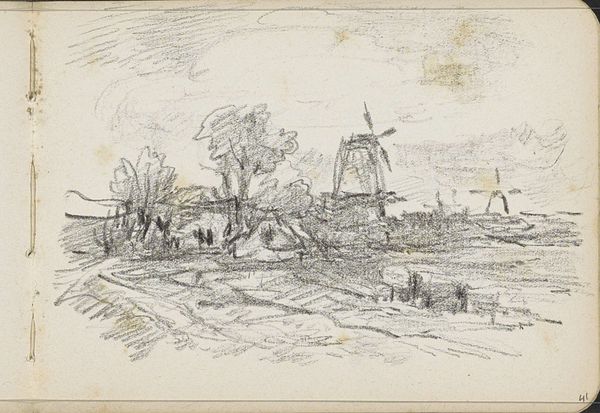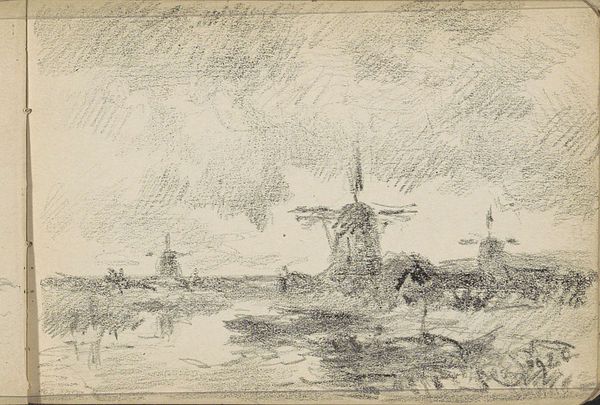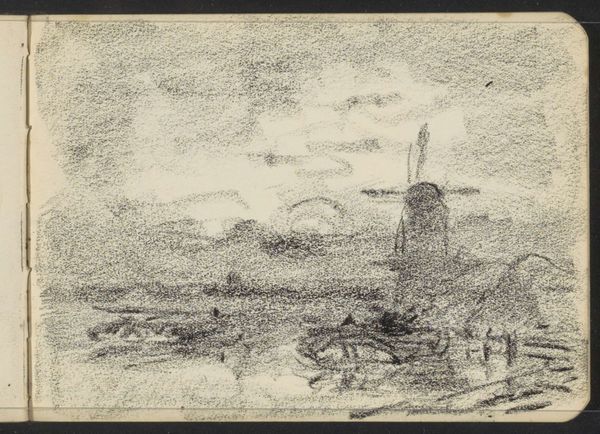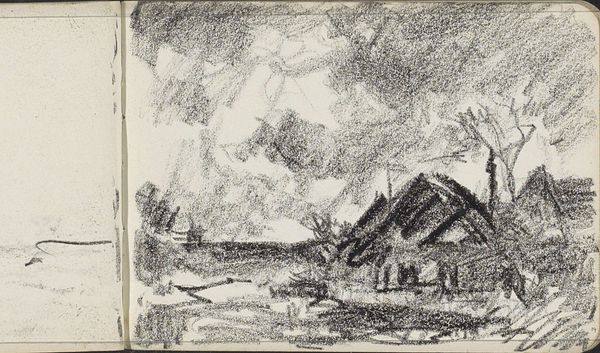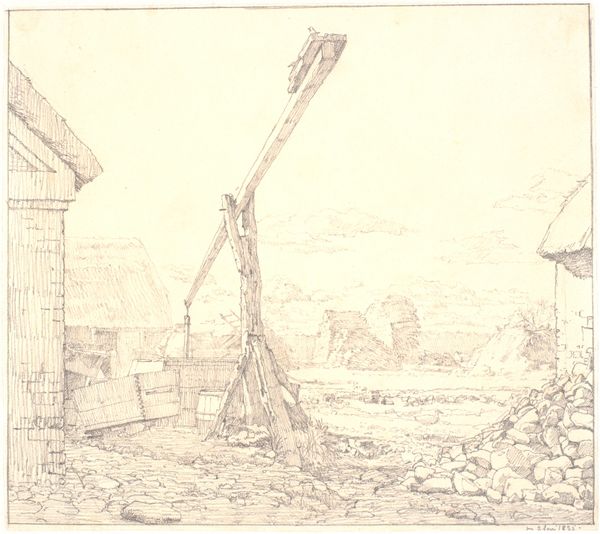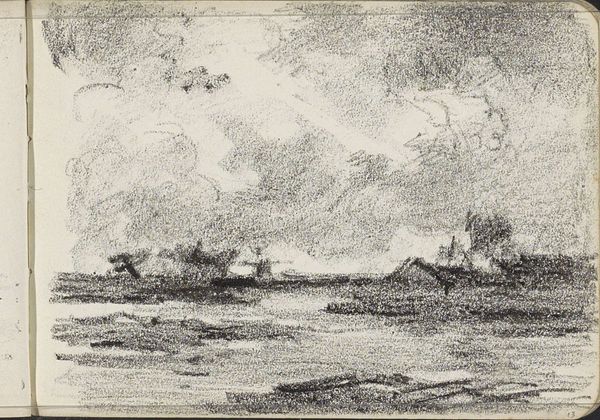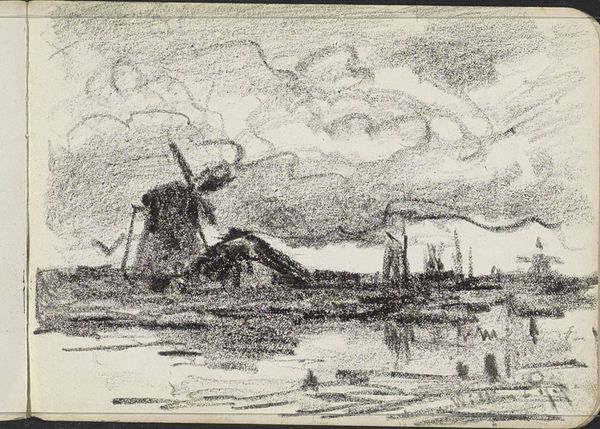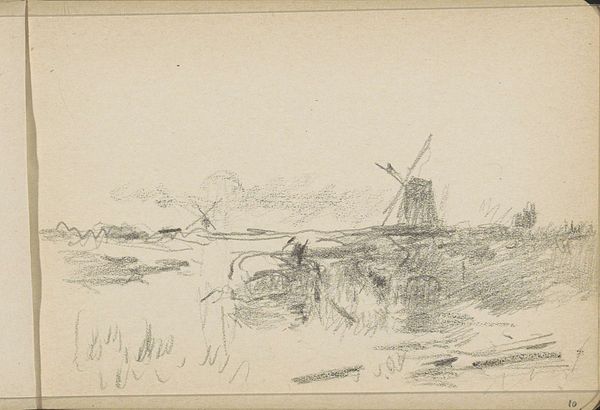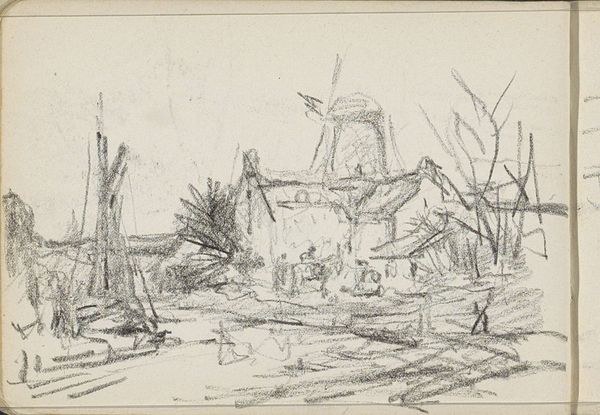
Dimensions: height 114 mm, width 159 mm
Copyright: Rijks Museum: Open Domain
Curator: Willem Cornelis Rip's "Landscape with Windmills," dating to 1907, is a wonderful example of his talent. Crafted with graphite, it presents a compelling view of the Dutch countryside. Editor: Immediately, I'm struck by its atmospheric quality. It’s brooding yet beautiful, almost romantic in its stark simplicity. The soft graphite rendering gives it a hazy, dreamlike quality. Curator: The social context of these landscapes is key; windmills were not merely picturesque. They were the backbone of the Dutch economy, symbols of innovation and industriousness. Rip's choice highlights the modernization debate happening in the Netherlands. Editor: Absolutely. But more than that, windmills resonate deeply within Dutch iconography; they symbolize a national identity carved out of persistent struggles against nature, specifically water, for generations. These images aren't only technical innovations; they evoke deep-seated resilience and a stubborn cultural self-reliance. Curator: And Rip was painting in a time of changing landscapes and industrial shifts. Many artists used images like these to create tension around a vanishing past, nostalgia about disappearing jobs, and concerns about economic realities for people who depend on old ways of life. Editor: The drawing is undeniably evocative; its reliance on shape, light and shading invites the eye to see the universal reflected in what appears like local images of windmills in waterlogged countrysides. I appreciate the artist’s reliance on stark graphic images as being very bold to tell the local narratives through symbolic visual icons. Curator: I agree. There’s a potent interplay between national symbolism and personal expression. "Landscape with Windmills" invites us to think about how images participate in building public and national identities. Editor: A fascinating glimpse into not only a place but also how deeply rooted symbolic images define the identity. Curator: Exactly. It reflects society and symbolism. I hope you now appreciate Willem Cornelis Rip's work on a much broader range of personal expression and visual symbols.
Comments
No comments
Be the first to comment and join the conversation on the ultimate creative platform.

